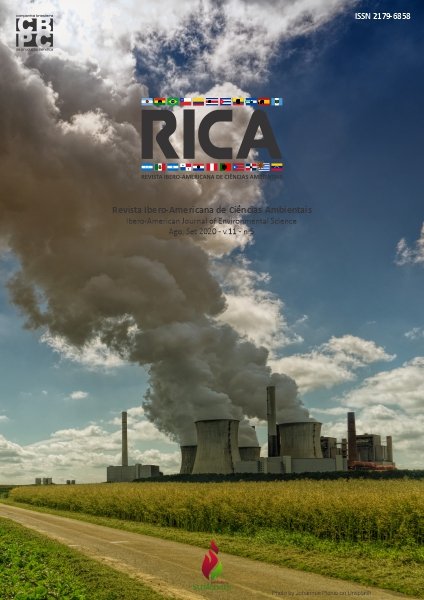Geostatistical assessment of trace metals in urban soils, Paraná, Brazil
DOI:
https://doi.org/10.6008/CBPC2179-6858.2020.005.0032Keywords:
Environmental Impact Assessment, Monitoring, Soils, Spatial Inference, Trace ElementsAbstract
Trace metals are common pollutants in urban soils thus making important the assessment of these pollutants. The main purpose of this study was investigated the concentrations of trace metals in urban soils in the industrial region of Curitiba, in the State of Paraná, Brazil and to examine the applicability of geostatistical modeling for assessing the environmental impact generated. For the analyses of trace elements, soil samples were collected at a depth of 0-20 cm and subjected to an acid digestion, in accordance with the 3050B method. The identification of trace elements was through the technique Spectroscopy of Optical Emission. The soil texture was also analyzed and the data were determined by the compositional analysis method. For the geostatistical mapping, it was used the software R, with the geoR package. The spatial variability of the sampled data was analyzed previously calculating the classic statistical indicators. The results indicated an approximated normal distribution of the data samples which is desirable. Then, the Matheron's classical estimator was used to compute the experimental semivariogram for several directions. No effect of anisotropy was shown. The semivariogram was fitted to three theoretical models: spherical, exponential and Gaussian. The results of cross-validation of spherical model suggested that it is the best model among the others. Finally, the predictions of metals at unknown locations were obtained by ordinary kriging. In relation to the values obtained of metals and the standard values of the Brazilian referee legislation of management of contaminated sites, only one site had Ni levels higher than is allowed and other metals were ok. The generated map shows clearly the spatial variation of trace metals in the studied area. The results are suitable and suggest that the use of this methodology provides significant contributions to management of contaminated areas by different trace metals.
Downloads
Downloads
Published
Issue
Section
License
The CBPC - Companhia Brasileira de Produção Científica (Brazil CNPJ: 11.221.422/0001-03) the material rights of the published works. The rights relate to the publication of the work anywhere in the world, including rights to renewals, expansions and dissemination of the contribution, as well as other subsidiary rights. All electronically published works may subsequently be published in printed collections under the coordination of this company and / or its partners. The authors preserve the copyright, but are not allowed to publish the contribution in another medium, printed or digital, in Portuguese or in translation.









